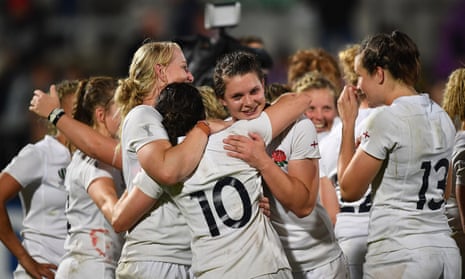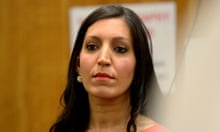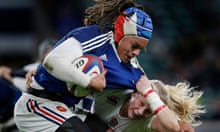Rather than Catchphrase, ITV viewers will see England’s Red Roses take on New Zealand in the women’s rugby World Cup final on Saturday night, underlining the sport’s soaring popularity.
It is the first time the final, being played in Belfast’s Kingspan stadium, has won a primetime slot on Britain’s most popular commercial channel and caps a triumphant summer for England’s female rugby players.
It rounds off a bumper summer for women’s sport, with England’s cricketers winning the World Cup, beating India by nine runs in a thrilling final at Lord’s, and its footballers reaching the Euro 2017 semi-finals in a match shown live on Channel 4. Johanna Konta became the first female Briton to reach the semi-finals of Wimbledon since 1978, while Hannah Cockcroft won a 10th world title at the World Para Athletic Championships.
The rising popularity of the Red Roses is an illustration of the shifting culture of rugby, which is transforming from a macho sport to one played by tens of thousands of women and girls across the country.
“The women playing at the level of the World Cup are very much the tip of the iceberg. The vast majority of players are all in amateur community clubs,” said Alex Boutell, club captain for the ladies’ section of Hampstead rugby club, the largest in central London.
According to the Rugby Football Union (RFU), there are about 27,600 female rugby players in England, with more than 550 women’s and girls’ teams in 300 clubs.
On a warm evening in August, Boutell and fellow members of the Hampstead ladies, who range in age from their early 20s to late 30s, perform technical drills as the sun sets over Parliament Hill fields.
“Women’s rugby is definitely becoming popular, and over the past few years we’ve seen an uptick in women joining the club,” said Boutell, 38, a lawyer. “We’ve also got a very strong juniors’ section, and we’re seeing girls turn up to play in that from the age of six and seven.
“The community is consistently growing, both at the grassroots level and senior international level, and both are helping each other. The England ladies are fantastic in the way they represent the sport. They’re very passionate, not just at their own level but about the development of the sport generally.
“We’ve had players come down to run a training session or join in. They’re so friendly and encouraging to people who are playing at or considering playing at lower levels, and that sort of thing really inspires younger players.”
The women who join the club do so for many reasons: some want a new challenge, some have ambitions of playing internationally, and some just want to do more exercise. Hannah Witcheard, a 26-year-old nurse, joined a month ago, having never played rugby before.
“I went to my friend’s engagement party and all her friends were in this team,” she said. “They were such a lovely bunch of girls and I missed team sports so I thought: ‘Why not give it a go?’ You see all these girls playing at a top level, and you think actually it’s stuff like this where it starts.”
About 1.1 million viewers tuned in for England’s 20-3 semi-final win over France on Tuesday night, and many more are expected to watch Saturday’s final. Across the channel, France 2 drew a record audience for a women’s rugby match, with 3.4 million watching that game.
The international team has been working hard for years to raise the sport’s profile, and Saturday’s final follows a series of successes. England Women won the Rugby World Cup in 2014 after a record-breaking seventh consecutive Six Nations win in 2012. They also became the first team in Six Nations history not to concede a try and won the team of the year award at the BBC Sports Personality of the Year 2014 – a first for a women’s team.
Maggie Alphonsi, a 2014 World Cup winner and one of the most prominent faces of international women’s rugby, said the success of a team always generated more interest. “People want to know more about it, and coverage in the papers and across the board grows,” she said. “If you can see it, then you can be it.”
Sports considered to be male-dominated such as rugby, cricket and football, Alphonsi said, were now producing top-class female athletes. “That’s changing the culture at the grassroots level. You see more girls and their parents going: ‘It’s OK, I can get my daughter into sport, because look how successful the top athletes are.’”
Lois Forsell, who works with the Leeds Rhinos Foundation to build the profile of girls’ rugby league in schools, said the triumphs of the Red Roses, as well as the England women’s cricket and the football teams, were improving the image of women’s sport. “It’s being seen as less inferior and people are starting to take notice of how much dedication and time women put into their sport,” said Forsell, who will be representing England in the rugby league World Cup in November.
Role models, she added, were changing. “Rugby is something that girls want to do. It’s seen as cool. When I was at school I played rugby outside of school with the lads. No one wanted to do it in PE … a lot of the girls that we get playing rugby league now will say: ‘I’ll come to training but I’ve got dance afterwards.’ That crossover wouldn’t have happened six or seven years ago. It’s no longer seen as a sport for a certain kind of girl or woman. It’s open to all,” Forsell said.
All of those in the sport agree that ITV’s decision to broadcast the final has been highly significant, because it will introduce new groups of people to the sport. In July, the cover of Rugby World magazine was dominated by women’s rugby for the first time in the publication’s 57-year history – an indication of how far women’s rugby has come.
“There are so many interesting stories in the women’s game because they have come from so many various backgrounds,” said the deputy editor, Sarah Mockford. “Most of these women have had careers and fit their training around that. For example, one New Zealand player who has been playing for three years was also a firefighter.”
Mockford said she was more excited about Saturday’s final than any men’s finals. “It’s great spectacle. The semi-final was a great game of rugby, not a great game of women’s rugby.”
Meanwhile, about 20 of the Hampstead women are travelling to Belfast to watch the game live. “It’ll be nice watching it and going: ‘That’s what we did last weekend.’” said Witcheard, before rejoining her own match to run head first at an opponent and tackle her with a thud to the floor.
Six to watch
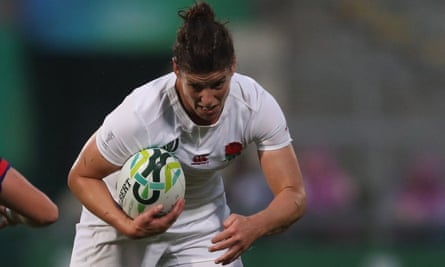
Sarah Hunter
England’s captain and No 8 began playing rugby league in north-east England before switching to union in her teens. Hunter, who works for the RFU, is a Wigan Warriors fan but might struggle to catch them lining up in the Challenge Cup final on Saturday afternoon.

Sarah Bern
The 20-year-old scored the try that put the Red Roses into the final. The youngest member of England’s World Cup squad, who has to carry the team mascot, Rory the Lion, throughout the tournament, is a tight-head prop known affectionately as “Box on legs” by the rest of the side.

Emily Scarratt
England’s star player scored the match-winning try in the 2014 World Cup final. The centre marked her new-found celebrity by heading back to the family farm in Leicestershire where she grew up helping pick potatoes. Appropriately enough, Scarratt used to teach PE at King Edwards’ school in Birmingham.

Marlie Packer
The 27-year-old flanker has filled the sizeable boots of the Red Rose’s most recognised player, Maggie Alphonsi, with aplomb. A former plumbing and heating engineer for Homeserve before earning a professional contract.
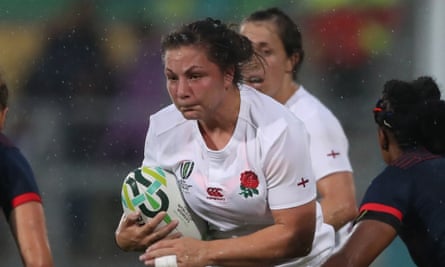
Amy Cokayne
England’s hooker learned her craft in New Zealand after her father landed a job in the New Zealand Air Force and the family emigrated when she was nine. The Ipswich-born 21-year-old chose to represent England, however, and studies Sports Science at Loughborough University.
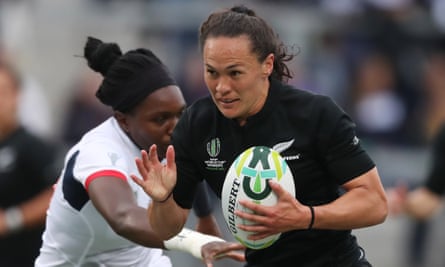
And … beware the Black Ferns’ Portia Woodman
Woodman has scored 13 tries in New Zealand’s four matches so far, including four in their semi-final earlier this week. Her father, Kawhena, and her uncle Fred Woodman are both former All Blacks, and her aunt Te Aroha Keenan was a New Zealand netballer.
